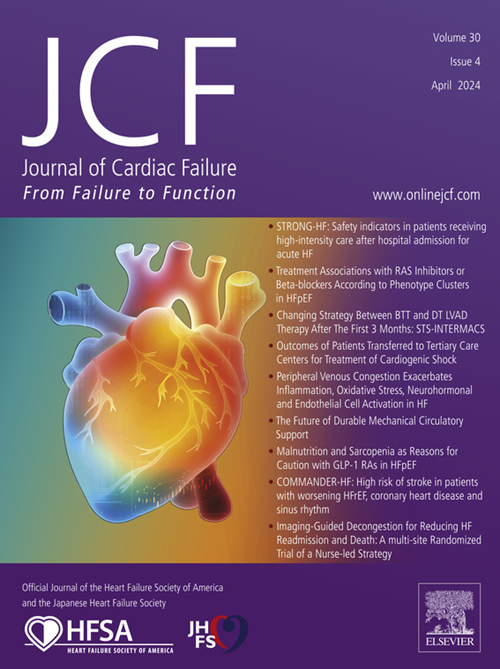Safety And Efficacy Of Outpatient Inotropic Therapy With Milrinone Versus Dobutamine As A Bridge To Orthotopic Heart Transplant Or Left Ventricular Assistive Device Implantation
IF 6.7
2区 医学
Q1 CARDIAC & CARDIOVASCULAR SYSTEMS
引用次数: 0
Abstract
Background
Patients with advanced heart failure may require an outpatient bridge with inotropes to orthotopic heart transplant (OHT) or left ventricular assist device (LVAD) implantation. While several studies compare milrinone and dobutamine with respect to their risk, cost, and efficacy in a variety of clinical settings, none address their comparative use specifically as an outpatient bridge to advanced therapies.
Methods
This is a single center, retrospective cohort study. Patients who received milrinone or dobutamine in the outpatient setting prior to undergoing LVAD implantation or OHT between 2000-2023 were included. We assessed the number and duration of hospitalizations and incidence of major adverse events including arrhythmia, bleeding, PICC-line related complications, infections, hypotension, heart failure admission, and shock between groups.
Results
Of 560 patients who underwent LVAD implantation or OHT, 128 met the inclusion criteria. Of these patients, 30% (38) were on dobutamine and 70% (90) were on milrinone. More patients on dobutamine had a history of valvular disease compared to milrinone (42.1% vs. 21.1%, p= 0.015). Otherwise, baseline characteristics including history of chronic kidney disease and arrhythmias were similar between groups. Patients bridged with dobutamine had a significantly higher median number of days hospitalized (27.5 vs. 19.0, p = 0.033, respectively), rate of admission per month (0.57 vs. 0.32, p = 0.005), and proportion of days hospitalized (0.43 vs. 0.21, p = 0.001) (Table 1). More patients were hospitalized in the dobutamine group (94.6% vs. 76.7%, p = 0.015). There was no significant difference in the incidence of arrhythmia, shock, PICC-line complications, infection, stroke, or heart failure exacerbation between groups.
Conclusion
In patients with advanced heart failure requiring outpatient inotrope as a bridge to LVAD or OHT, bridging with dobutamine was associated with higher rates of admission per month and proportion of days hospitalized compared to bridging with milrinone. In addition, bridging with dobutamine was associated with a higher incidence of hospitalizations.
求助全文
约1分钟内获得全文
求助全文
来源期刊

Journal of Cardiac Failure
医学-心血管系统
CiteScore
7.80
自引率
8.30%
发文量
653
审稿时长
21 days
期刊介绍:
Journal of Cardiac Failure publishes original, peer-reviewed communications of scientific excellence and review articles on clinical research, basic human studies, animal studies, and bench research with potential clinical applications to heart failure - pathogenesis, etiology, epidemiology, pathophysiological mechanisms, assessment, prevention, and treatment.
 求助内容:
求助内容: 应助结果提醒方式:
应助结果提醒方式:


